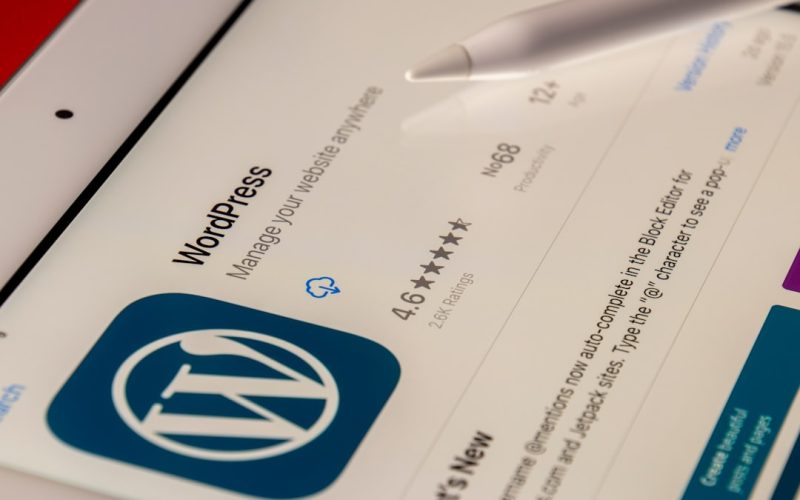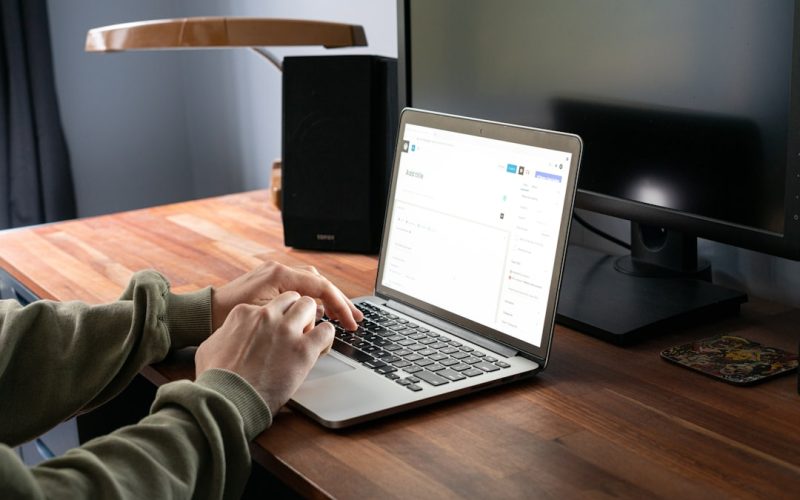The White Screen of Death (WSOD) is a term that sends shivers down the spine of any WordPress user. I remember the first time I encountered it; my heart sank as I stared at a blank screen where my website should have been. The WSOD is essentially a blank page that appears when there’s a critical error in the WordPress environment, preventing the site from loading properly.
Unlike other errors that might display a message or code, the WSOD offers no clues, leaving me in a state of confusion and frustration. It’s as if my website has vanished into thin air, and I’m left wondering what went wrong. This phenomenon can occur for various reasons, often related to issues with themes, plugins, or server configurations.
The lack of an error message can make diagnosing the problem particularly challenging. I’ve learned that the WSOD can happen during updates, after installing new plugins, or even when making changes to the theme. Understanding that this issue is not uncommon among WordPress users has provided me with some comfort, but it doesn’t diminish the urgency to resolve it.
The WSOD can be a significant roadblock, especially for those of us who rely on our websites for business or personal projects.
Table of Contents
ToggleKey Takeaways
- The White Screen of Death is a common WordPress error that can be caused by various issues such as plugin conflicts, theme conflicts, and memory limit issues.
- Common causes of the White Screen of Death include plugin conflicts, theme conflicts, and memory limit issues.
- Troubleshooting the White Screen of Death involves checking for plugin conflicts, checking for theme conflicts, and resolving memory limit issues.
- Checking for plugin conflicts is important in resolving the White Screen of Death, as incompatible plugins can cause the issue.
- Checking for theme conflicts is also crucial, as a faulty theme can lead to the White Screen of Death.
Common Causes of the White Screen of Death
As I delved deeper into the world of WordPress troubleshooting, I discovered several common causes behind the White Screen of Death. One of the primary culprits is often a plugin conflict. When I install a new plugin or update an existing one, it can sometimes clash with other plugins or even the theme itself.
This conflict can lead to fatal errors that result in the dreaded WSOD. I’ve found that keeping track of my plugins and their compatibility with my current theme is crucial in preventing such issues. Another frequent cause is memory limit exhaustion.
WordPress has a default memory limit set by the hosting provider, and if my site exceeds this limit—perhaps due to high traffic or resource-intensive plugins—I may find myself staring at a white screen. I’ve experienced this firsthand when my site was running multiple heavy plugins simultaneously. It’s essential to monitor resource usage and be aware of how much memory my site requires to function smoothly.
Troubleshooting the White Screen of Death

When faced with the White Screen of Death, my first instinct is to troubleshoot systematically. I’ve learned that taking a methodical approach can save me time and frustration. The first step I usually take is to clear my browser cache and refresh the page.
Sometimes, it’s just a temporary glitch that can be resolved with a simple refresh. If that doesn’t work, I move on to checking my website’s error logs for any clues about what might be causing the issue. Next, I often enable debugging mode in WordPress.
By adding a line of code to my wp-config.php file, I can display error messages directly on the screen instead of just a blank page. This has proven invaluable in pinpointing the source of the problem. Once I have more information about the error, I can take targeted actions to resolve it, whether that means deactivating plugins or adjusting settings.
Checking for Plugin Conflicts
| Plugin Name | Status |
|---|---|
| Plugin A | Active |
| Plugin B | Inactive |
| Plugin C | Active |
One of the most common sources of the White Screen of Death is plugin conflicts. When I suspect that a plugin might be causing the issue, I take a deep breath and prepare to deactivate them one by one. This process can be tedious, but it’s often necessary to identify the problematic plugin.
I usually start with any recently installed or updated plugins since they are more likely to cause conflicts. After deactivating a plugin, I refresh my website to see if it resolves the WSOD. If it does, I know I’ve found the culprit and can either look for an alternative plugin or reach out to the developer for support.
If deactivating plugins doesn’t solve the issue, I move on to checking other potential causes, but this step has saved me countless hours of frustration in the past.
Checking for Theme Conflicts
If plugin conflicts don’t seem to be the issue, I turn my attention to theme conflicts. Themes can also introduce errors that lead to the White Screen of Death, especially if they are poorly coded or incompatible with certain plugins. To check for theme-related issues, I switch to a default WordPress theme like Twenty Twenty-One.
This allows me to determine if my current theme is causing the problem. If switching themes resolves the WSOD, it’s clear that there’s an issue with my original theme. In such cases, I often reach out to the theme developer for assistance or look for updates that might fix any bugs.
Sometimes, simply updating the theme can resolve compatibility issues and restore my website to its former glory.
Resolving Memory Limit Issues

Memory limit issues are another common cause of the White Screen of Death that I’ve encountered multiple times. When my site exceeds its allocated memory limit, it can lead to critical errors and ultimately result in a blank screen. To resolve this issue, I usually check my hosting provider’s settings and see if there’s an option to increase my PHP memory limit.
I’ve found that adding a line of code to my wp-config.php file can also help increase memory limits directly from WordPress. By defining a higher memory limit, I can often prevent future occurrences of the WSOD due to memory exhaustion. However, if increasing the memory limit doesn’t resolve the issue, it may be time to consider upgrading my hosting plan or optimizing my website’s performance.
Updating WordPress Core and Plugins
Keeping WordPress core and plugins up to date is crucial for maintaining a healthy website and preventing issues like the White Screen of Death. Whenever I receive notifications about available updates, I make it a priority to install them promptly. Outdated software can lead to compatibility issues and security vulnerabilities that may contribute to errors.
I’ve learned that before performing updates, it’s wise to back up my website. This way, if something goes wrong during the update process—such as encountering the WSOD—I can easily restore my site to its previous state without losing any data. Regularly updating not only helps prevent issues but also ensures that my website runs smoothly and efficiently.
Restoring Default File Permissions
File permissions play a significant role in how WordPress operates on a server.
Incorrect file permissions can lead to various issues, including the White Screen of Death.
When troubleshooting this problem, I often check file permissions using an FTP client or through my hosting control panel.
The recommended file permissions for WordPress are typically 755 for directories and 644 for files. If I find that any files or directories have incorrect permissions, I adjust them accordingly. Restoring default file permissions has resolved WSOD issues for me in the past and is an essential step in ensuring that my website functions correctly.
Deactivating and Reactivating Themes and Plugins
If all else fails and I’m still facing the White Screen of Death, I sometimes resort to deactivating all themes and plugins before reactivating them one by one. This method allows me to isolate any problematic components systematically. By starting with a clean slate, I can identify which theme or plugin is causing conflicts without any interference from others.
Once everything is deactivated, I reactivate each plugin individually while refreshing my website after each activation. This process helps me pinpoint exactly which plugin or theme is responsible for triggering the WSOD. While it can be time-consuming, this method has proven effective in resolving persistent issues.
Using Debugging Tools to Identify the Issue
In my quest to resolve the White Screen of Death, I’ve discovered that utilizing debugging tools can be incredibly helpful in identifying underlying issues. Tools like Query Monitor or Debug Bar provide insights into database queries, PHP errors, and other performance metrics that can shed light on what’s going wrong. By installing these debugging tools on my WordPress site, I gain access to valuable information that helps me troubleshoot more effectively.
For instance, if there are specific PHP errors being triggered when loading certain pages, these tools will highlight them, allowing me to address them directly rather than guessing at potential causes.
Seeking Professional Help for Persistent Issues
Despite all my efforts in troubleshooting and resolving issues related to the White Screen of Death, there are times when seeking professional help becomes necessary. If I find myself stuck after exhausting all possible solutions—especially if my website is critical for business—I don’t hesitate to reach out to a WordPress developer or support service. Professional assistance can provide insights and solutions that may not be immediately apparent to me as an end-user.
They have experience dealing with complex issues and can often resolve problems more quickly than I could on my own. While it may involve additional costs, investing in professional help has saved me time and stress in critical situations. In conclusion, encountering the White Screen of Death can be daunting for any WordPress user like myself.
However, understanding its causes and employing systematic troubleshooting methods has empowered me to tackle this issue head-on. Whether it’s checking for plugin conflicts, resolving memory limit issues, or seeking professional help when needed, each step brings me closer to restoring my website and ensuring its smooth operation in the future.
If you are interested in learning more about website design and accessibility, check out this article on accessible website design. It provides valuable insights on how to create websites that are user-friendly for all individuals, including those with disabilities. This knowledge can help you not only fix the White Screen of Death in WordPress but also ensure that your website is accessible to a wider audience.
FAQs
What is the White Screen of Death in WordPress?
The White Screen of Death in WordPress is a common issue where a user sees a blank white screen instead of the expected webpage. This can be caused by various factors such as plugin conflicts, theme issues, or memory limits.
How can I fix the White Screen of Death in WordPress?
To fix the White Screen of Death in WordPress, you can try troubleshooting steps such as deactivating plugins, switching to a default theme, increasing memory limits, and checking for PHP errors.
What are some common causes of the White Screen of Death in WordPress?
Common causes of the White Screen of Death in WordPress include plugin conflicts, theme issues, exhausted memory limits, and PHP errors.
How can I prevent the White Screen of Death in WordPress?
To prevent the White Screen of Death in WordPress, you can regularly update plugins and themes, use reputable and well-coded plugins, and monitor your website for any performance issues.




